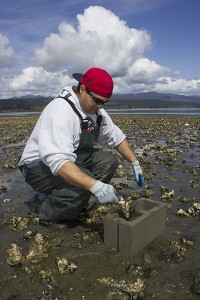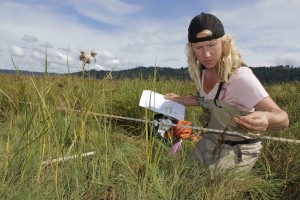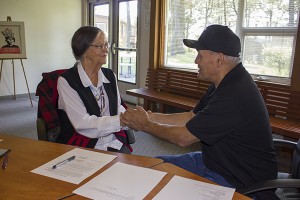
Source: Northwest Indian Fisheries Commission
The Skokomish Tribe has strategically placed nearly 100 cinderblocks on the Skokomish tidelands with hopes of attracting an invasive shellfish, the ornate Japanse oyster drill.
“Oyster drills are known to seek out hard vertical structures to gather and lay their egg cases, so by experimentally baiting them with cinder blocks, we’re hoping to lessen their impacts on our oyster seed,” said Chris Eardley, the tribe’s Shellfish Biologist. “We’re going to try and use the biology of these creatures against them.”
The snails release a pheromone to attract others, so Eardley hopes his 72 cinder blocks across eight acres of tidelands will be covered with snails and eggs soon, which will be collected by the staff and removed from the tidelands. The tribe is employing a few methods of drill control and will do an end-of-season survey in late summer to see if the population decreased.
The invasive snail with a pointed two-inch shell latches onto young Pacific oysters, drills a hole through the shell, then eats the meat, killing the oyster.
“They’re detrimental to the oyster population that we’re trying to build and sustain on the tidelands,” Eardley said, “but my chickens will like them.”




